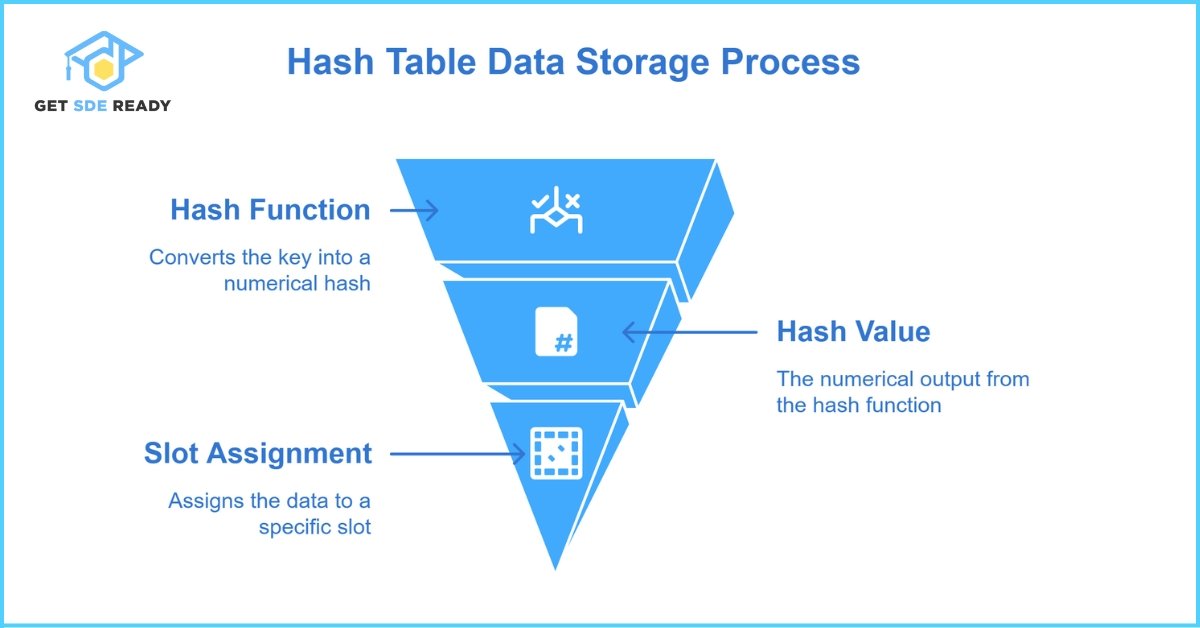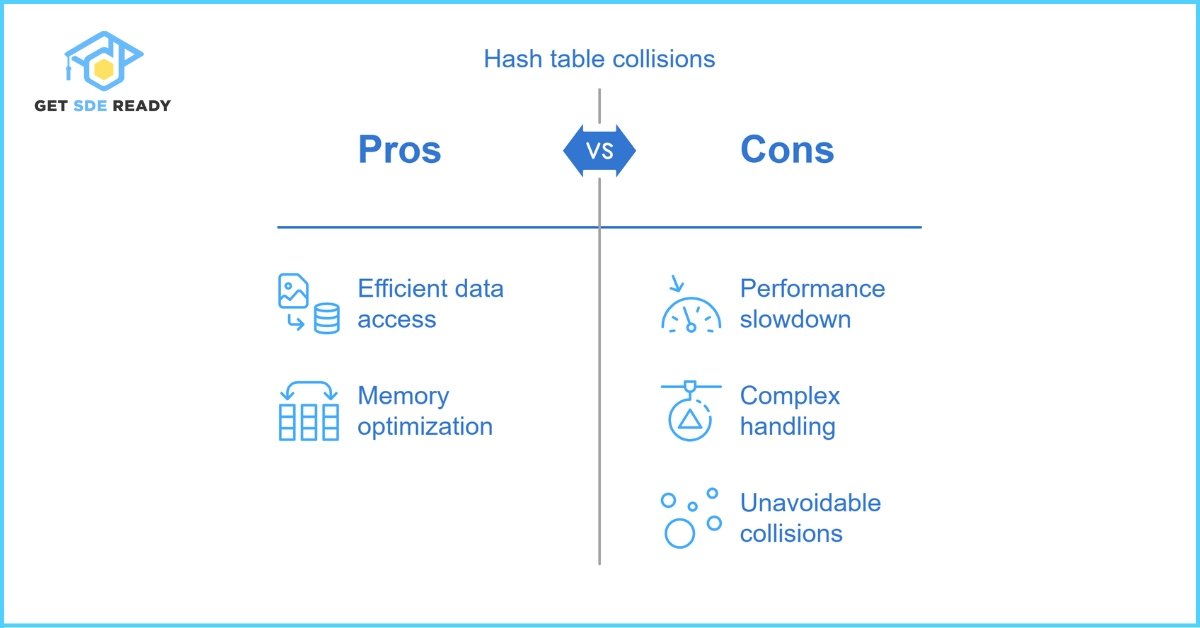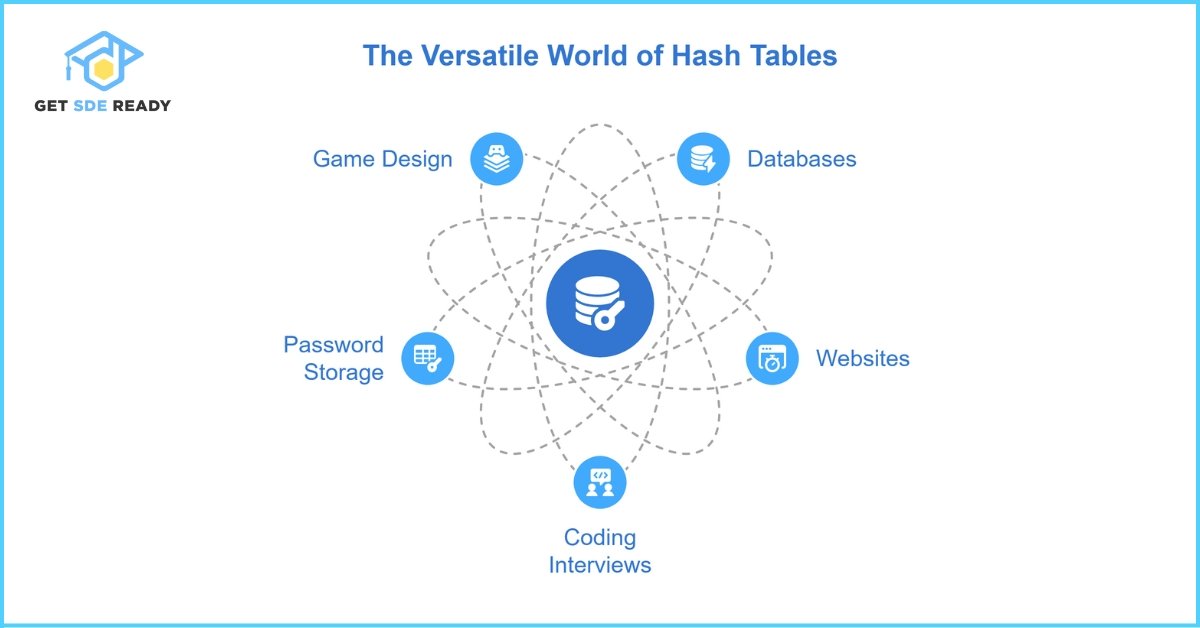Data Structures and Algorithms
- Introduction to Data Structures and Algorithms
- Time and Space Complexity Analysis
- Big-O, Big-Theta, and Big-Omega Notations
- Recursion and Backtracking
- Divide and Conquer Algorithm
- Dynamic Programming: Memoization vs. Tabulation
- Greedy Algorithms and Their Use Cases
- Understanding Arrays: Types and Operations
- Linear Search vs. Binary Search
- Sorting Algorithms: Bubble, Insertion, Selection, and Merge Sort
- QuickSort: Explanation and Implementation
- Heap Sort and Its Applications
- Counting Sort, Radix Sort, and Bucket Sort
- Hashing Techniques: Hash Tables and Collisions
- Open Addressing vs. Separate Chaining in Hashing
- DSA Questions for Beginners
- Advanced DSA Questions for Competitive Programming
- Top 10 DSA Questions to Crack Your Next Coding Test
- Top 50 DSA Questions Every Programmer Should Practice
- Top Atlassian DSA Interview Questions
- Top Amazon DSA Interview Questions
- Top Microsoft DSA Interview Questions
- Top Meta (Facebook) DSA Interview Questions
- Netflix DSA Interview Questions and Preparation Guide
- Top 20 DSA Interview Questions You Need to Know
- Top Uber DSA Interview Questions and Solutions
- Google DSA Interview Questions and How to Prepare
- Airbnb DSA Interview Questions and How to Solve Them
- Mobile App DSA Interview Questions and Solutions
DSA Interview Questions
- DSA Questions for Beginners
- Advanced DSA Questions for Competitive Programming
- Top 10 DSA Questions to Crack Your Next Coding Test
- Top 50 DSA Questions Every Programmer Should Practice
- Top Atlassian DSA Interview Questions
- Top Amazon DSA Interview Questions
- Top Microsoft DSA Interview Questions
- Top Meta (Facebook) DSA Interview Questions
- Netflix DSA Interview Questions and Preparation Guide
- Top 20 DSA Interview Questions You Need to Know
- Top Uber DSA Interview Questions and Solutions
- Google DSA Interview Questions and How to Prepare
- Airbnb DSA Interview Questions and How to Solve Them
- Mobile App DSA Interview Questions and Solutions
Introduction to High-Level System Design
System Design Fundamentals
- Functional vs. Non-Functional Requirements
- Scalability, Availability, and Reliability
- Latency and Throughput Considerations
- Load Balancing Strategies
Architectural Patterns
- Monolithic vs. Microservices Architecture
- Layered Architecture
- Event-Driven Architecture
- Serverless Architecture
- Model-View-Controller (MVC) Pattern
- CQRS (Command Query Responsibility Segregation)
Scaling Strategies
- Vertical Scaling vs. Horizontal Scaling
- Sharding and Partitioning
- Data Replication and Consistency Models
- Load Balancing Strategies
- CDN and Edge Computing
Database Design in HLD
- SQL vs. NoSQL Databases
- CAP Theorem and its Impact on System Design
- Database Indexing and Query Optimization
- Database Sharding and Partitioning
- Replication Strategies
API Design and Communication
Caching Strategies
- Types of Caching
- Cache Invalidation Strategies
- Redis vs. Memcached
- Cache-Aside, Write-Through, and Write-Behind Strategies
Message Queues and Event-Driven Systems
- Kafka vs. RabbitMQ vs. SQS
- Pub-Sub vs. Point-to-Point Messaging
- Handling Asynchronous Workloads
- Eventual Consistency in Distributed Systems
Security in System Design
Observability and Monitoring
- Logging Strategies (ELK Stack, Prometheus, Grafana)
- API Security Best Practices
- Secure Data Storage and Access Control
- DDoS Protection and Rate Limiting
Real-World System Design Case Studies
- Distributed locking (Locking and its Types)
- Memory leaks and Out of memory issues
- HLD of YouTube
- HLD of WhatsApp
System Design Interview Questions
- Adobe System Design Interview Questions
- Top Atlassian System Design Interview Questions
- Top Amazon System Design Interview Questions
- Top Microsoft System Design Interview Questions
- Top Meta (Facebook) System Design Interview Questions
- Top Netflix System Design Interview Questions
- Top Uber System Design Interview Questions
- Top Google System Design Interview Questions
- Top Apple System Design Interview Questions
- Top Airbnb System Design Interview Questions
- Top 10 System Design Interview Questions
- Mobile App System Design Interview Questions
- Top 20 Stripe System Design Interview Questions
- Top Shopify System Design Interview Questions
- Top 20 System Design Interview Questions
- Top Advanced System Design Questions
- Most-Frequented System Design Questions in Big Tech Interviews
- What Interviewers Look for in System Design Questions
- Critical System Design Questions to Crack Any Tech Interview
- Top 20 API Design Questions for System Design Interviews
- Top 10 Steps to Create a System Design Portfolio for Developers
Hashing Techniques: Hash Tables and Collisions
Hashing is a super cool way computers store and find data quickly, kind of like a librarian who knows exactly where every book is! Whether you’re curious about how your favorite apps work or want to ace your next coding project, understanding hashing is a game-changer. If you’re excited to master data structures like this, sign up for free course updates here and kickstart your learning adventure with Get SDE Ready!
In this article, we’ll explore hash tables, how they work, and what happens when things get tricky with collisions. By the end, you’ll know all about this powerful technique and how it’s used everywhere, from apps to websites.
Introduction to Hashing
Hashing is like a magic trick that turns data into a secret code to store it fast. Imagine you have a huge pile of toys, and you want to find your favorite one without digging through everything. Hashing gives each toy a special number, so you know exactly where it belongs!
This technique is a big deal in computer science because it makes searching, adding, and removing data super quick. It’s the secret sauce behind things like login systems and fast searches. To dig deeper into tricks like this, check out this DSA course that breaks it all down.
Hashing uses something called a hash function, which is like a recipe that turns your data (like a name or number) into a number code. That code tells the computer where to put or find your data. Pretty neat, right?
What is a Hash Table?
A hash table is like a big filing cabinet with numbered drawers, where each drawer holds a piece of data. It’s a special way to organize information so you can grab it fast, like finding your favorite snack in a vending machine. Hash tables are built using arrays, and they rely on hash functions to decide which “drawer” (or slot) your data goes into.
Think of it this way: if you’re storing names, the hash function might turn “Alex” into the number 5, so Alex goes in slot 5. It’s simple but powerful! Hash tables are great because they usually find data in just one step, making them way faster than searching a long list.
They’re used all over the place, like in coding languages and databases. Want to see how they fit into bigger coding projects? Take a peek at this web development course for some real-world examples.
How Hash Tables Work
So, how do hash tables pull off their speedy magic? It all starts with the hash function, which takes your data (called a key) and turns it into a number. That number is like an address telling the hash table where to store or look for the data.
Here’s the step-by-step:
- You give the hash table a key, like “cat.”
- The hash function crunches “cat” into a number, say 3.
- The hash table puts “cat” (or its value, like “meow”) into slot 3.
When you want “cat” back, the hash function does the same trick, and boom—you’ve got it! This usually happens in constant time, or O(1), which is geek-speak for “really fast.” For more on how coders make this happen, explore this master DSA course.
But here’s the catch: the hash function has to be smart. A good one spreads data evenly across the table, so there’s no crowding. A bad one? Well, that leads us to collisions, which we’ll talk about soon.

Collision in Hash Tables
A collision is like when two kids show up to school with the same lunchbox—it’s confusing! In hash tables, it happens when two different keys get the same number from the hash function. For example, if “dog” and “cat” both turn into 3, they’d try to squeeze into the same slot.
Collisions aren’t rare. In fact, a study from MIT showed that even good hash functions can have a collision rate of about 1-2% in big tables. Why does this happen? Because hash functions squish big data into smaller slots, and sometimes overlaps are unavoidable.
This can slow things down because the hash table has to figure out how to handle the mix-up. That’s why coders work hard to fix collisions. Curious about tackling coding challenges like this? Check out this crash course for some quick tips.

Methods to Handle Collisions
Collisions might sound like trouble, but there are clever ways to deal with them. Let’s look at the top methods coders use to keep hash tables running smoothly.
Chaining
Chaining is like letting multiple kids share a lunchbox by adding a chain of extra boxes. If two keys land in the same slot, they’re stored in a linked list there. So, slot 3 might hold “cat” and “dog” in a little chain.
- Pros: Easy to set up and works with lots of data.
- Cons: Can get slow if the chain grows too long.
Open Addressing
Open addressing is like finding the next empty chair when your spot’s taken. If slot 3 is full, the hash table checks slot 4, then 5, until it finds an empty one. This is called probing.
- Pros: Keeps the table neat with no extra lists.
- Cons: Fills up fast and can get messy.
Here’s a quick comparison:
Method | Speed (Best Case) | Space Used | Complexity |
Chaining | O(1) | More | Simple |
Open Addressing | O(1) | Less | Tricky |
Both methods work, but the choice depends on your project. For more on picking the right one, see this DSA interview guide.
Applications of Hash Tables
Hash tables are everywhere, like the unsung heroes of tech! They power stuff we use daily, and here’s how.
In databases, they help find records lightning-fast—think searching for your name in a giant list. Websites use them for caching, storing bits of pages so they load quicker next time. “Hash tables cut lookup time by up to 90% in some systems,” says Dr. Jane Smith, a computer science expert.
They’re also big in coding interviews. Nail questions about them with tips from this Netflix DSA guide. From password storage to game design, hash tables make tech faster and smarter.

What is the difference between a hash table and an array?
A hash table uses a hash function to place data in slots based on keys, making it super fast to find stuff—usually in one step! An array just lists data in order, so searching can take longer, especially with lots of items. To learn more about these structures, check out our DSA course.
How do hash functions work?
Hash functions take data, like a word, and turn it into a number that fits in the hash table. They’re designed to be quick and spread data evenly to avoid pile-ups. Dive deeper into coding essentials with our web development course.
What are the advantages of using hash tables?
Hash tables shine at speed—finding, adding, or deleting data happens almost instantly. They’re flexible for all kinds of data and save time in big projects. Master these skills in our master DSA course.
How can I choose a good hash function?
Pick one that’s fast and spreads data out evenly to avoid collisions. Test it with your data to see how it performs—simple tweaks can make a big difference. Boost your coding know-how with our data science course.
What happens when there are too many collisions?
Too many collisions slow things down because the table has to work harder to sort them out. It’s like a crowded party—everyone’s bumping into each other! Prep for tough coding challenges with our design DSA course.

DSA, High & Low Level System Designs
- 85+ Live Classes & Recordings
- 24*7 Live Doubt Support
- 400+ DSA Practice Questions
- Comprehensive Notes
- HackerRank Tests & Quizzes
- Topic-wise Quizzes
- Case Studies
- Access to Global Peer Community
Buy for 60% OFF
₹25,000.00 ₹9,999.00
Accelerate your Path to a Product based Career
Boost your career or get hired at top product-based companies by joining our expertly crafted courses. Gain practical skills and real-world knowledge to help you succeed.

Low & High Level System Design
- 20+ Live Classes & Recordings
- 24*7 Live Doubt Support
- Case Studies
- Comprehensive Notes
- HackerRank Tests
- Topic-wise Quizzes
- Access to Global Peer Community
- Interview Prep Material
Buy for 65% OFF
₹20,000.00 ₹6,999.00

Design Patterns Bootcamp
- Live Classes & Recordings
- 24/7 Live Doubt Support
- Practice Questions
- Case Studies
- Access to Global Peer Community
- Topic wise Quizzes
- Referrals
- Certificate of Completion
Buy for 50% OFF
₹2,000.00 ₹999.00

ML & AI Kickstart
- Live Classes & Recordings
- 24/7 Live Doubt Support
- 2 Live Projects
- Case Studies
- Topic wise Quizzes
- Access to Global Peer Community
- Certificate of Completion
- Referrals
Buy for 50% OFF
₹2,000.00 ₹999.00

LLD Bootcamp
- 7+ Live Classes & Recordings
- Practice Questions
- 24/7 Live Doubt Support
- Case Studies
- Topic wise Quizzes
- Access to Global Peer Community
- Certificate of Completion
- Referrals
Buy for 50% OFF
₹2,000.00 ₹999.00

Essentials of Machine Learning and Artificial Intelligence
- 65+ Live Classes & Recordings
- 24*7 Live Doubt Support
- 22+ Hands-on Live Projects & Deployments
- Comprehensive Notes
- Topic-wise Quizzes
- Case Studies
- Access to Global Peer Community
- Interview Prep Material
Buy for 65% OFF
₹20,000.00 ₹6,999.00

Fast-Track to Full Spectrum Software Engineering
- 120+ Live Classes & Recordings
- 24*7 Live Doubt Support
- 400+ DSA Practice Questions
- Comprehensive Notes
- HackerRank Tests & Quizzes
- 12+ live Projects & Deployments
- Case Studies
- Access to Global Peer Community
Buy for 57% OFF
₹35,000.00 ₹14,999.00
Reach Out Now
If you have any queries, please fill out this form. We will surely reach out to you.
Contact Email
Reach us at the following email address.
Phone Number
You can reach us by phone as well.
+91-97737 28034
Our Location
Rohini, Sector-3, Delhi-110085